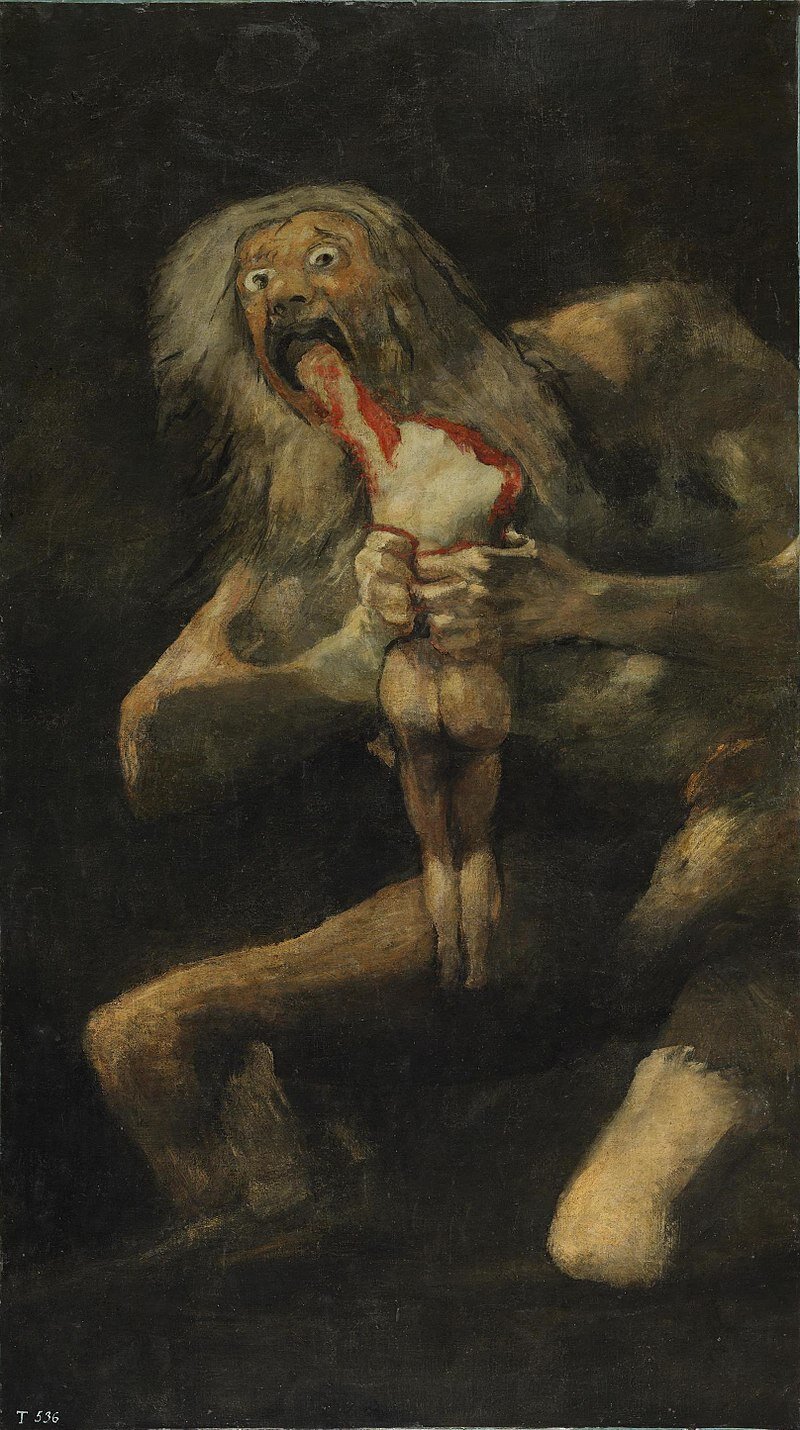REVIEW: How Mythology and History Intersect in Ghost Limb
by Gretchen Lenth
Legend has it that Hades, god of the underworld, loved Persephone so much that he stole her from the Earth and forced her to become his queen. Demeter, goddess of the harvest and mother of Persephone, was so stricken with grief that she neglected her godly duties. As a result, the earth withered at her feet, plunging the world into winter for as long as Demeter remained separated from her daughter.
Demeter and Persephone’s story was originally intended to explain the four seasons. In Ghost Limb, award-winning playwright and Iowa Playwrights Workshop graduate Mariela Treviño Orta focuses instead on the myth’s theme of motherly love and motherly grief by connecting Greek mythology to living history.
On October 4th, the University of Iowa Theatre department presented a readthrough of Ghost Limb via a livestream on the department’s YouTube channel. Directed by Natalia Villamonte Zito, Ghost Limb is the first production of the fall semester in the department’s Borderless series.
This initiative, founded last spring under the name “Diverse Voices,” is a response to the University of Iowa’s status as a predominantly white institution (PWI). According to the Borderless webpage, it aims to curate “theatrical works by playwrights representative of the diversity of experiences essential for students, faculty, administrators, and greater Iowa City community members to encounter onstage.”
Treviño Orta’s play was highlighted by the Borderless series in honor of Latinx/a/o Heritage Month and will be followed up by a November production for Native American Heritage month.
Saturn Devouring His Son by Francisco Goya
A short year ago, I might have watched this performance shoulder-to-shoulder with other audience members in the Theatre Building. Instead, I drew in the curtains of my dorm room window, turned off the lights, and steamed the video from my television screen. While I’ve watched my fair share of COVID-era concerts from home, this was my first chance to see how a dramatic performance navigates our new fully digital and socially distant mode of operation.
Ghost Limb didn’t begin by pulling back the curtains or flooding stage lights onto the actors and set. Instead, the readthrough began with a static photograph in black and white. In this photograph stood dozens of human figures gathered in protest in what appears to be a city square. In the hands of many are signs and posters depicting faces I would later recognize as desaparecidos—“disappeared persons.”
In order for me to learn the context behind this image, I must first enter the world of Ghost Limb. The time is 1977 and the place is Argentina. Within this historical setting, the play follows the story of Consuelo Alfaro (played by Luli Gomez Teruel), and her son Javier (played by Sedrick Cabrera).
Early on, the audience learns that Javier dreams of being an artist. In his opening monologue, we see him express his emotional connection to Francisco Goya’s painting Saturn Devouring His Son. Javier is often rebuked for his creative passion by his strait-laced father, Eugenio (played by Antonio Vega), who wishes his son would pursue architecture instead.
This internal conflict between family members pales in comparison to the play’s main conflict. When the Argentine police connect Javier’s name to a “dangerous” mural painted on an alley wall, they invade the Alfaro household and violently take him in as prisoner.
The tragedy that befalls the Alfaro family within Ghost Limb mirrors that of thousands of Argentine families throughout the Dirty War. In 1976, a military coup overthrew then president Isabel Perón and replaced her with a military junta.
This regime—led by dictator Jorge Rafaél Videla—systematically censored the Argentine people and was responsible for the kidnapping, torture, and murder of an estimated 10,000 to 30,000 citizens.
Considered “leftist terrorists” by the junta, those kidnapped included left-wing political opponents, journalists, university teachers, and artists alike—anyone who was even rumored to oppose the fascist government.
The scene in which Javier is taken captive is the last we see of the character. From that point forward, we follow Consuelo’s journey as she tries to reunite with her child. This journey is an uphill one. At every turn, the characters Conseulo bumps up against attempt to bar her from progressing.
It becomes clear early on that few people in the world of Ghost Limb can be trusted. Most of the supporting cast (the police officer, the orderly, and even the priest) don sunglasses and appear just as menacing as the army general who tortures the captive Javier.
Conseuelo soon picks up on the ulterior motives of officials she thought she could trust. When she recognizes the sunglasses on their faces, she sees this not only as proof that they have something to hide, but also that those most affected by state-ordered violence (people like Consuelo), go “unseen” by the perpetrators.
Without the help of government officials, Consuelo instead relies on an arm wound she sustained during her son’s capture. The throbbing pain she feels leads her like a dowsing rod to hints regarding Javier’s location.
One such hint is when Consuelo’s pain leads her to a crowded city plaza filled with protesting women. It is here that she is introduced to the Madre—one element of Ghost Limb that connects the play’s more mystical elements with reality.
The Asociación Madres de Plaza de Mayo (The Mothers of Plaza de Mayo), or the Madre for short, are a group of Argentine women who were the face of resistance against government oppression. According to Margo Skornia’s Dramaturg’s Note on Ghost Limb, “They gathered in the Plaza and held silent vigils for their missing children. The Madres are recognized as the first group to organize against the human rights abuses Argentines suffered under the Dirty War.”
One Madre (played by Mayte Gomez-Cruz) warns Consuelo that “grief is much more manageable than pain.” Even so, Consuelo insists her son is still alive and continues her hunt to the bitter end.
As I watched the readthrough in real-time, it became clear early on that the creative team behind Ghost Limb planned to make the most out of what they had. The result of their efforts was a production presented in a way I’d never seen before.
Since actors were restricted to bust shots not unlike that of a Zoom screen, stage directions were presented as an omniscient narration (performed by Jessica Murillo).
But just because Ghost Limb lacks physical acting doesn’t mean there isn’t anything to look at.
Behind the Zoom screens for each actor were pictures representing setting and major set pieces.
While Javier spoke of the grotesque giant in Goya’s work, the screen zoomed in on the monster’s face. Even though the actors couldn’t stand on a stage and the pomegranate tree—a major thematic set piece throughout the film—couldn’t exist in reality, I was able to place myself in the world of Ghost Limb through the photos and illustrations sewn into the play’s verbal presentation.
On the topic of performance, the entire cast did an excellent job delivering lines in what must have felt like a constricting format.
Asociación Madres de Plaza de Mayo used in Ghost Limb Daniel Garcia/AFP/Getty Images
As a college student, I’ve sat through my fair share of Zoom lectures. I understand first-hand how hard it is to time out dialogue when Zoom is constantly lagging behind or garbling worlds. Even if a few gaps between lines felt a little empty from the audience’s perspective, each performer kept the momentum going throughout the production. The nature of a YouTube live stream makes freeze-frames or buffers inevitable, but I found myself invested in the world of Ghost Limb all the same.
It was especially impressive how emotive some members of the cast could be when those they were speaking with were an undefined distance away.
In particular, I want to point out Luli Gomez Teruel’s performance as leading lady Consuelo. Her vocal performance made clear the growing desperation she felt as a mother searching for a son almost hopelessly lost. Her sadness, anger, and wincing pain came through clearly even when the audience could see little more than her face and shoulders.
Near the play’s end, Consuelo finds herself in an operating room against her will. There, her arm is amputated. Because Consuelo felt she could feel the presence of her son from the throbbing of her wound, this amputation leads to the presumed death of her son offscreen. Gomez Teruel’s ragged transformation from a determined and hopeful mother into a grieving one was just as convincing as it was heartbreaking.
When I heard the narrator signal the play’s end, I couldn’t help but remember a line Consuelo spoke to her son scenes before his capture: “If they dragged you down to Hades, I would follow.”
During the after play discussion, Treviño Orta explained that growing up around Greek mythology inspired many of her stories. Within the world of Ghost Limb, the season changes as the story progresses—an allusion to Persephone and Demeter.
In the scene where Javier is taken away from his family, it snows in their living room. From that point forward, the cold weather of winter remains a constant, even when Consuelo remarks that it should be summertime.
One departure Ghost Limb makes from the Greek myth is that Javier never returns to his mother’s side, and spring never arrives.
This is also where the pomegranate tree plays into the story. In the ending scene where Consuelo loses her arm and Javier is murdered, a series of illustrations depict Javier eating the fruit of the pomegranate tree. This further alludes to Persephone and Demeter.
Unwilling to let Persephone return to her mother, Hades feeds the girl six seeds from a pomegranate—the fruit of death. For Persephone, this ensured her return to the underworld every six months. For Javier, it marked the end of his life.
In the final scene, we find Consuelo flipping over dead bodies washed ashore after being dropped into the ocean alive by the government. The general finds Consuelo and makes this remark about the snow that begins to fall around them: “Maybe it’s an eternal winter.”
Though the allusions between Ghost Limb and Greek mythology are powerful, more powerful still are the ways the story mirrors those of thousands of Argentine families.
“What happened in Argentina in the 1970s was not an anomaly,” Treviño Orta said. Nor was it limited to actions made in Argentina.
“The fact is, the United States was involved in and supported state violence in various countries. Our government aided the overthrow of democratically-elected governments in South America and helped to install far-right dictators,” Treviño Orta said, speaking of Operation Condor.
A result of the ongoing Cold War, this operation expressed the United State’s desire to “eliminate Communist influence” in various South American countries. The exact number of casualties as a result of these operations is unknown, but some place the number at around 60,000 lives.
Stories like Ghost Limb are just as important every month as they are during Latinx/a/o Heritage Month. It was invaluable to see a group of people join together to tell a story of a war that I, as a white American, had never even heard of despite the hand my country played in its orchestration.
But for any person, the story of Consuelo and her son can humanize a distant history that may not be as distant as we’d hope.
“Oddly enough, this play set in the ‘70s felt so much like what we’ve seen our current administration do,” Treviño Orta said. “It feels like they’re taking notes from the fascist handbook.”
According to Villamonte Zito, stories like Ghost Limb can be both cautionary as well as inspirational. “The fear of subversive youths—we’re seeing it in this country, too,” Villamonte Zito said. “We need to fight against it. Hopefully this inspires others to join the fight.”
I hope so too.



